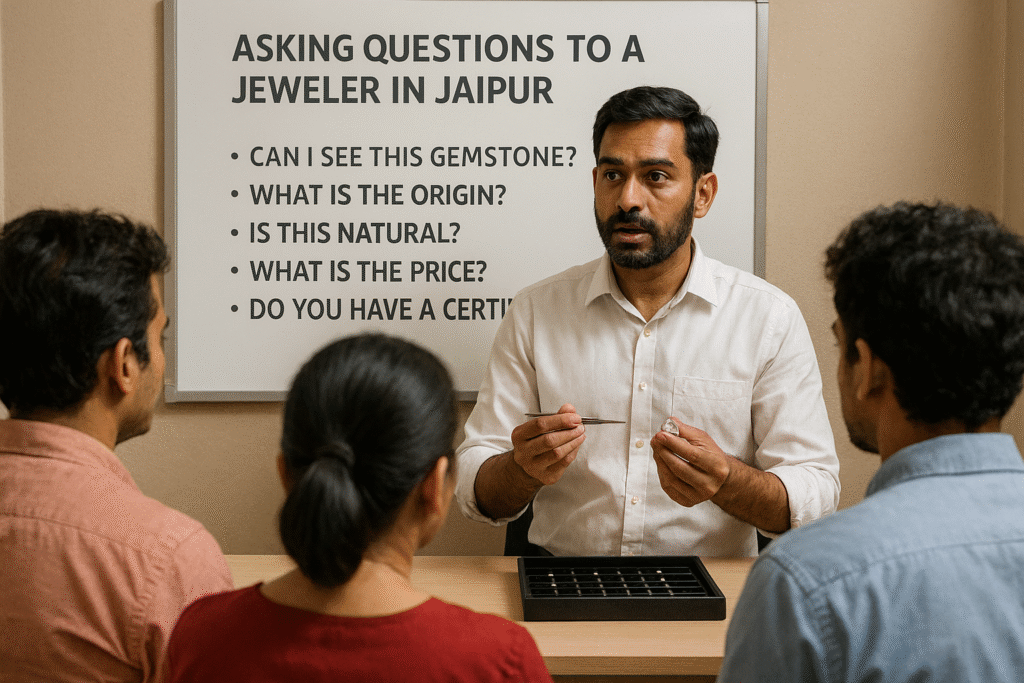Jaipur Gem Buying Tip | Gemstone Treatment Awareness | Jewelry Shopping in India
Most gem buyers make the same mistake.
They focus on price, not process.
But any gemologist will tell you—
The first question you ask can save you thousands.
Ask This First:
“Is this stone natural, and has it been treated in any way?”
Don’t skip it.
This one question separates a fair deal from an expensive regret.
Why It Matters:
Gemstone treatments change value—sometimes dramatically.
- Heating
Used for rubies and sapphires.
It improves color and clarity.
Heated stones are common and legal—
but less valuable than untreated ones. - Oiling
Common for emeralds.
Fills surface cracks and boosts clarity.
The effect fades over time.
A heavily oiled emerald can look flawless—but it’s fragile and overvalued. - Fracture-filling / Diffusion / Coating
These treatments are harder to spot.
They can mask low-quality stones.
They may not be stable or permanent.
Real-World Example:
You see two rubies.
Both are bright red.
Both are the same size.
One is untreated.
The other is heated.
The untreated ruby may cost 2–3x more.
But it holds long-term value.
Collectors and serious buyers always ask for lab proof.
What You Should Do:
- Ask directly about treatment
Don’t wait for the jeweler to volunteer information. - Request a lab certificate
Preferably from a trusted lab like GIA, IGI, or BGL.
It should clearly state the origin and any treatments. - Compare similar stones
One emerald may be “clean” due to oiling.
Another may have natural clarity—and a higher price. - Don’t assume “natural” means untreated
A stone can be both natural and treated.
Before You Buy in Jaipur:
- Are you paying for beauty—or for rarity?
- Will the stone’s appearance change over time?
- Is this something you’d want to resell or pass down?
Your buying power comes from asking the right questions.
Start with this one.
Then let the jeweler do the talking.
You’ll know more in the next 30 seconds than most tourists learn in a week.



